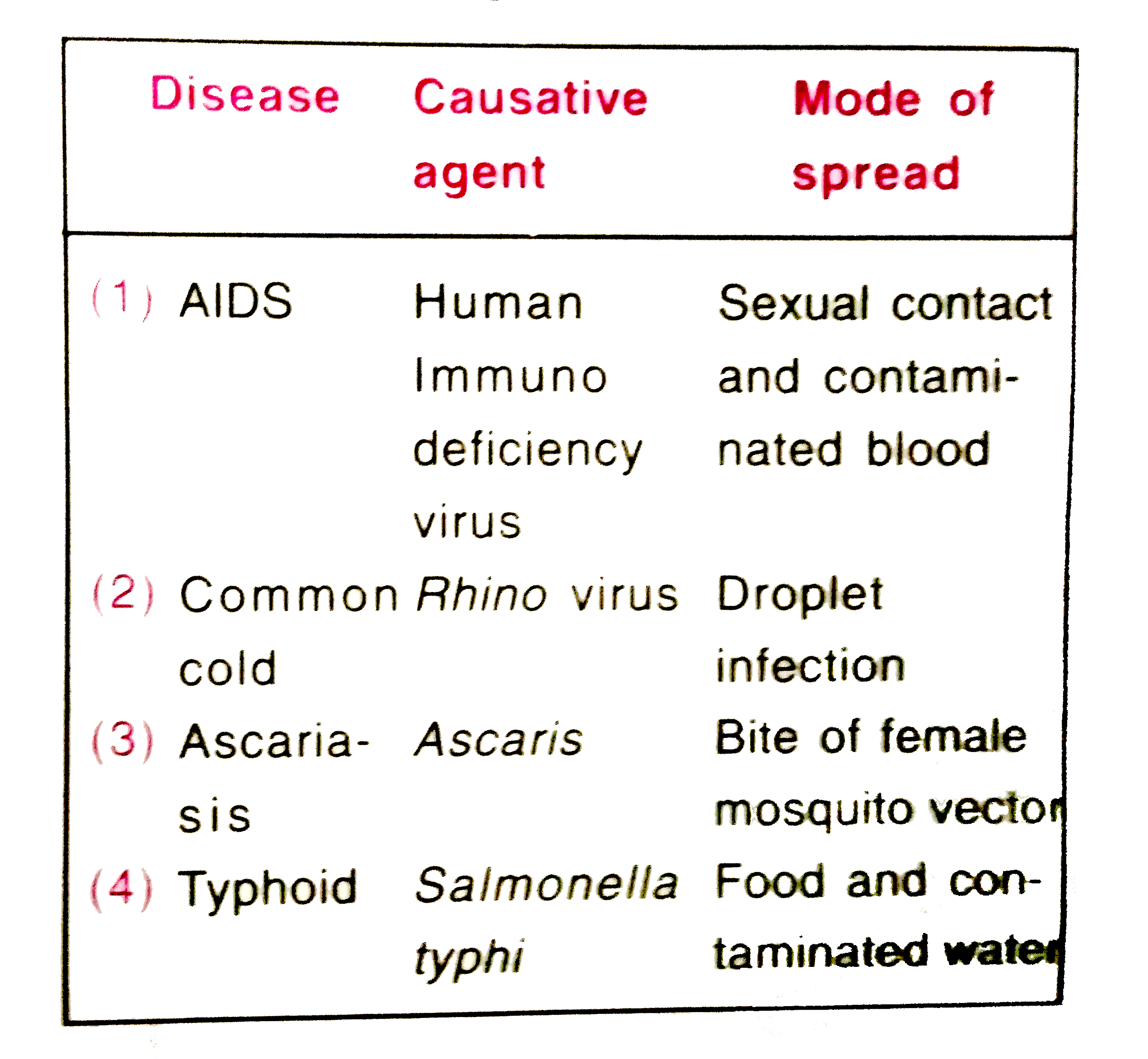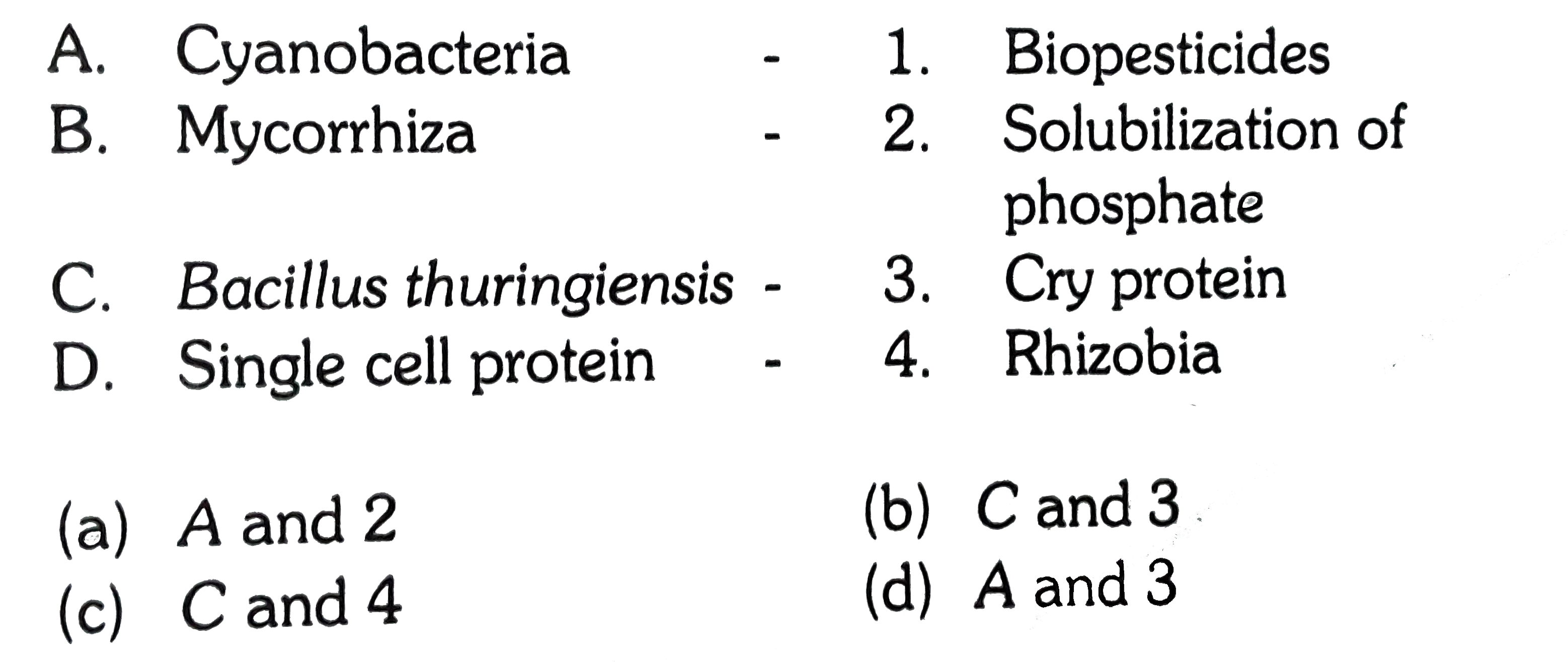Find out the mis match
PartPloidyEmbryo2n
PartPloidyEggn
PartPloidyEndosperm2n
PartPloidyPerisperm2n
The correct Answer is:C
To find the mismatch in the given parts and their corresponding ploidy, we will analyze each part and its ploidy status step by step.
1. Identify the Parts and Their Ploidy:
- We have four parts:
1. Embryo
2. Egg
3. Endosperm
4. Perisperm
- Their corresponding ploidy is given as:
1. Embryo - 2n
2. Egg - n
3. Endosperm - 2n
4. Perisperm - 2n
2. Analyze Each Part:
- Embryo:
- The embryo develops from the zygote, which is diploid (2n).
- Conclusion: Correctly matched as 2n.
- Egg:
- The egg (ovule) is haploid (n) as it is formed from meiosis.
- Conclusion: Correctly matched as n.
- Endosperm:
- The endosperm can vary in ploidy. In gymnosperms, it is typically haploid (n), while in angiosperms, it is usually triploid (3n).
- The provided ploidy is 2n, which is incorrect for gymnosperms and not the typical case for angiosperms.
- Conclusion: Mismatch here as it should be n (gymnosperms) or 3n (angiosperms).
- Perisperm:
- The perisperm is always diploid (2n) as it develops from the nucellus after fertilization.
- Conclusion: Correctly matched as 2n.
3. Identify the Mismatch:
- The only mismatch found is with the Endosperm, which is incorrectly labeled as 2n. It should be either n or 3n depending on the type of plant (gymnosperm or angiosperm).
Final Answer:
The mismatch is in the Endosperm, which is incorrectly labeled as 2n.
- We have four parts:
1. Embryo
2. Egg
3. Endosperm
4. Perisperm
- Their corresponding ploidy is given as:
1. Embryo - 2n
2. Egg - n
3. Endosperm - 2n
4. Perisperm - 2n
- Embryo:
- The embryo develops from the zygote, which is diploid (2n).
- Conclusion: Correctly matched as 2n.
- Egg:
- The egg (ovule) is haploid (n) as it is formed from meiosis.
- Conclusion: Correctly matched as n.
- Endosperm:
- The endosperm can vary in ploidy. In gymnosperms, it is typically haploid (n), while in angiosperms, it is usually triploid (3n).
- The provided ploidy is 2n, which is incorrect for gymnosperms and not the typical case for angiosperms.
- Conclusion: Mismatch here as it should be n (gymnosperms) or 3n (angiosperms).
- Perisperm:
- The perisperm is always diploid (2n) as it develops from the nucellus after fertilization.
- Conclusion: Correctly matched as 2n.
- The only mismatch found is with the Endosperm, which is incorrectly labeled as 2n. It should be either n or 3n depending on the type of plant (gymnosperm or angiosperm).
The mismatch is in the Endosperm, which is incorrectly labeled as 2n.
Topper's Solved these Questions
- REPRODUCTION IN ORGANISMSBOOK - AAKASH SERIESCHAPTER - REPRODUCTION IN ORGANISMSEXERCISE - Exercise-II (Exemplar Questions)
18 Videos
- REPRODUCTION IN ORGANISMSBOOK - AAKASH SERIESCHAPTER - REPRODUCTION IN ORGANISMSEXERCISE - Exercise-III (previous AIPMT/NEET Questions)
19 Videos
- REPRODUCTION IN ORGANISMSBOOK - AAKASH SERIESCHAPTER - REPRODUCTION IN ORGANISMSEXERCISE - Exercise-III (previous AIPMT/NEET Questions)
19 Videos
- MORPHOLOGY OF FLOWERING PLANTS BOOK - AAKASH SERIESCHAPTER - MORPHOLOGY OF FLOWERING PLANTS EXERCISE - EXERCISE - III (Previous AIPMT/NEET Questions)
41 Videos
- REPRODUCTIVE HEALTH BOOK - AAKASH SERIESCHAPTER - REPRODUCTIVE HEALTH EXERCISE - EXERCISE-III (PREVIOUS AIPMT/NEET QUESTIONS)
21 Videos
Similar Questions
Pickout the mis-match
View SolutionFind the mis match
View SolutionFind the mis-matched pair w.r.t. functions of stem
View SolutionFind out the wrong matching
View SolutionFind out the wrong match
View SolutionFind out the wrong match
View SolutionFind out the wrong match

View SolutionFind out the wrong match
View SolutionFind out the pairs, which are correctly matched

View SolutionSelect the mis match
View Solution
